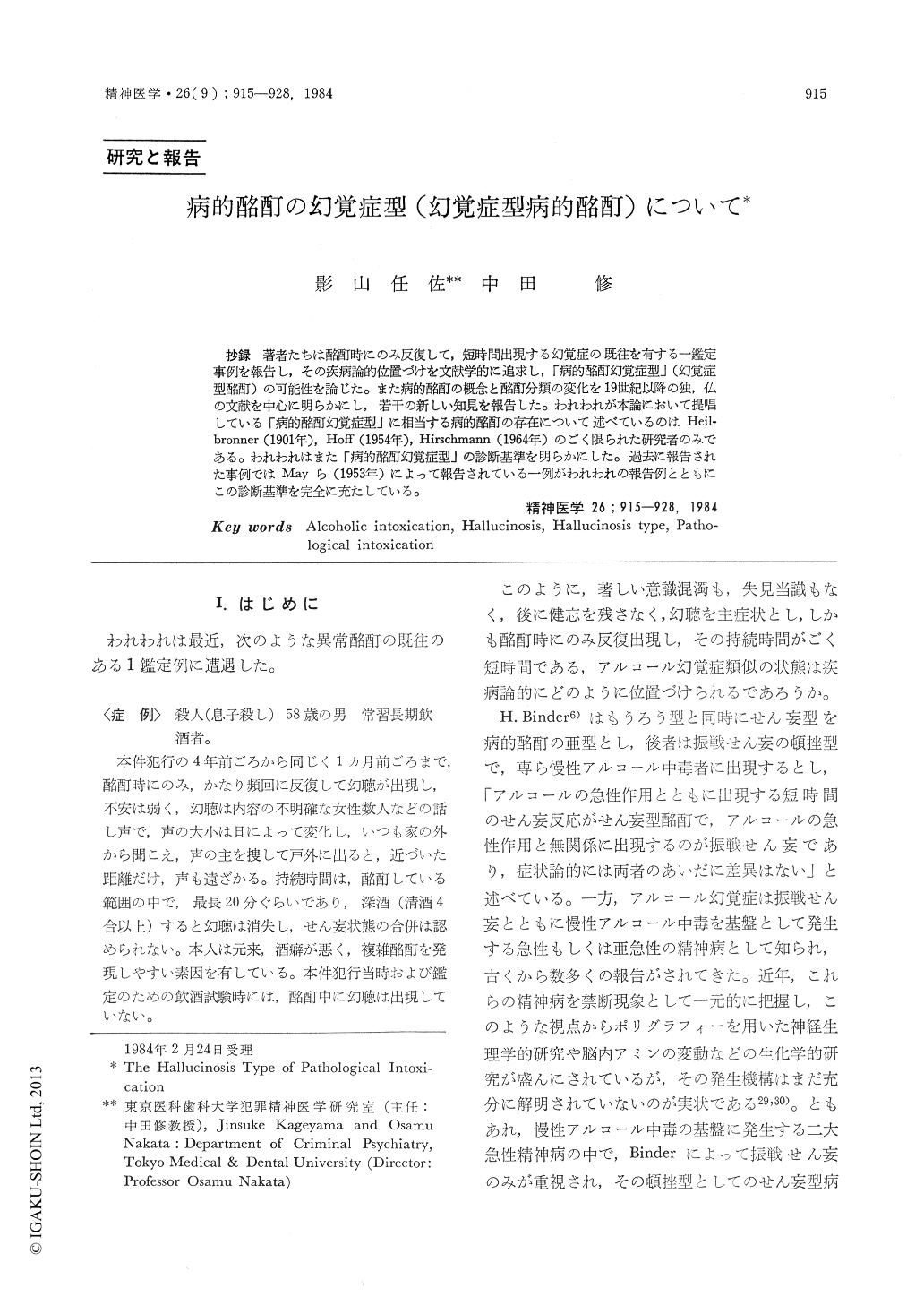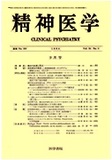Japanese
English
- 有料閲覧
- Abstract 文献概要
- 1ページ目 Look Inside
抄録著者たちは酩酊時にのみ反復して,短時間出現する幻覚症の既往を有する一鑑定事例を報告し,その疾病論的位置づけを文献学的に追求し,「病的酩酊幻覚症型」(幻覚症型酩酊)の可能性を論じた。また病的酩酊の概念と酩酊分類の変化を19世紀以降の独,仏の文献を中心に明らかにし,若干の新しい知見を報告した。われわれが本論において提唱している「病的酩酊幻覚症型」に相当する病的酩酊の存在について述べているのはHeilbronner(1901年),Hoff(1954年),Hirschmann(1964年)のごく限られた研究者のみである。われわれはまた「病的酩酊幻覚症型」の診断基準を明らかにした。過去に報告された事例ではMayら(1953年)によって報告されている一例がわれわれの報告例とともにこの診断基準を完全に充たしている。
The authors have experienced the following case at their recent expert examination.
A 58-year-old man had been drinking excessively for a long time. While from 5 years to one monthbefore his recent crime murdering his eldest son during complicated alcoholic intoxication, he had had recurrent episodes of hallucinosis. When slightly drunk-and only then, never when sober- ,he had heard vioces from the outdoors. The auditory hallucination persists for about a half hour without any heavy clouding of consciousness and delirious state.
In this report, the authors propose the problem of the hallucinosis which appears only during acute alcoholic intoxication, from the viewpoint of nosological classification. They review the history of foreign studies on alcoholic hallucinosis and on pathological intoxication established for the first time by Krafft-Ebing. They find that in contrast to the delirious type of pathological intoxication (Heilbronner, Bonhoeffer, Binder, and so on), the hallucinosis state of acute alcoholic intoxication has been discussed by a very small number of authors, namely by Heilbronner (1901), Hoff (1954), and Hirschmann (1964). Moreover, these authors did not study widely and thoroughly this problem, gave no clinical case, and their discussions are very short comments.
The authors propose the HALLUCINOSIS TYPEas the third variety, which should be added to the two types, i. e. dreamy and delirious types of Binder's pathological intoxication. They give the following criteria for the diagnosis of this type.
A. Major criteria (indispensable conditions) 1) It appears directly after alcohol intake. 2) It disappears within a short time, that is within acute alcoholic intoxication. B. Minor criteria (complemental conditions) 1) It appears only during acute intoxication. 2) It appears recurrently in the person concerned, while drunk. 3) It occurs in the case of habitual drinker.
The abovementioned case and the case reported by May et al. (1953) as that of alcoholic intoxication with schizophrenic reaction-alcoholic hallucinosis, namely their Case 36, satisfy all these conditions.
In fact, the hallucinosis type of pathological intoxication seems to be much rarer than any other type. The authors believe, however, it really exists as a clinical variety distinct from other ones.

Copyright © 1984, Igaku-Shoin Ltd. All rights reserved.


